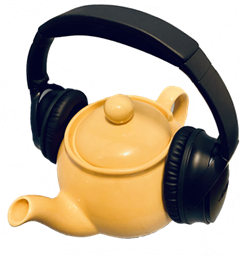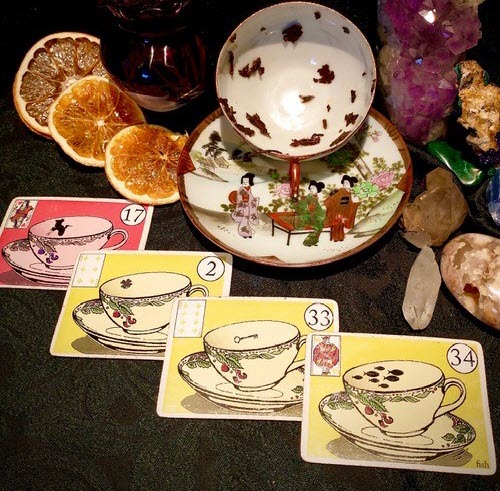
Tasseomancy offers enquirers the vantage of a personal seer and a glimpse of unseen days to come. Tea Biz asked Amy Taylor of The Art of Tea and Tasseomancy to do a reading for the tea industry on the eve of 2021.

See what the leaves have to say:
Reading the Tea Industry’s Tea Leaves for 2021
In the West, the art of reading tea leaves to foresee the future dates to the 16th Century but ancient texts suggest the Chinese were searching in the dregs of their teacups for signs and omens from antiquity. The name tasseomancy is derived from the French tassse (cup) with the Greek suffixes –graph (writing), -logy (the study of), and –mancy (divination).
Taylor, a tea sommelier certified by the Tea & Herbal Association of Canada, chose for this reading a port barrel scented black tea from the Hathikuli Tea Farm in Assam. Hathikuli is a 1,175-acre tea estate in central Assam situated along the south bank of the Brahmaputra River east of Nagaon. “What a gorgeous cup. I wanted to use a smaller leaf for this reading and a black tea because it is one we all connect with,” she explains. Taylor purchased the tea from World Tea House at the Toronto Tea Festival, just prior to a provincial lockdown.
Leaf reading
“The leaves really tell an interesting story. When I look into the cup it shows that in 2020 many of us were walking a tightrope,” says Taylor. “When we look at the future side of the cup we see a beautiful star showing a great deal of potential ahead, which means that the tea industry is going to grow and change in different ways.”

The cup shows that in 2020 many of us were walking a tightrope, says Art of Tea and Tasseomancy seer Amy Taylor. “When we look at the future side of the cup, we see a beautiful star showing a great deal of potential ahead, which means that the tea industry is going to grow and change in different ways.”
How it’s done
A heaped teaspoon of loose leaf tea is brewed in a special teapot with a channeled spout so the leaves enter the ornate cup without straining. The leaves quickly settle. The tea is sipped by the enquirer who chats with the reader until the cup is nearly drained. “The reader then takes the cup and saucer and swirls the tea vigorously around the cup before tipping the contents onto the inverted saucer. The leaves that remain adhere to the sides and bottom of the cup forming shapes that suggest symbols and patterns with meanings interpreted by the reader who peers into the cup. Shapes are assigned urgency by their position, with leaves to the left of the handle representing the past and those to the right, the future. For example, the shape of an apple at the top of the cup speaks of gaining knowledge while the same shape on the bottom could mean a lacking or loss of knowledge.
Taylor has conducted readings for more than 30 years and has taught tasseography for more than 20 years.

“I got into it because of my love for the leaf, and frankly it kept calling to me so I couldn’t ignore it,” she says. In a normal year, Taylor does as many as 500 tea- and tea card-readings at her shop in Hamilton, Ontario. This year the five-year-old Mystic Tearoom “was considerably less busy for obvious reasons” so Taylor conducted most of her readings online. She reads cards by email and schedules streaming video sessions including tea card reading parties.
The shop resembles a museum with more than 40 tasseography cups sets, literature, books, advertising and tea company giveaways from the past 120 years, all related to tea leaf reading.
The arrangement of leaves is limitless but the mind quickly recognizes patterns. Taylor is able to see shapes and patterns in the leaves, much like seeing shapes in clouds. She often combines a leaf reading with a reading of the cards as she did in her predictions for the tea industry. The crane, key, clover, and the school of fish are positive signs and while a historic transformation is underway, the leaves in this cup bode well for the New Year for the tea industry, according to leaves, says Taylor.

The Art of Tea and Tasseomancy
www.taotat.ca
Mystic Tearoom
116 Ottawa St. N, Hamilton, ON L8H 3Z1 CANADA
“Tea is one of a handful of plants that have shaped the world. Countless lives have been enriched by it – and more than a few sacrificed for it. Across cultures and centuries, tea has been endlessly adapted and reinvented. Fresh, yet timeless, tea is both the flavor of the moment and the taste of the past. Tea may be steeped in history, but history is steeped in tea.” – Anonymous
Copy this link to share the post.
Subscribe and receive Tea Biz weekly in your inbox.


